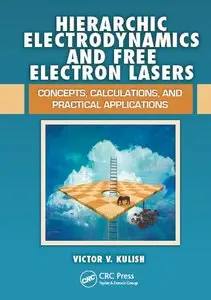Hierarchic Electrodynamics and Free Electron Lasers: Concepts, Calculations, and Practical Applications by Victor V. Kulish
English | 2011 | ISBN: 1439849358 | 697 pages | PDF | 12,9 MB
English | 2011 | ISBN: 1439849358 | 697 pages | PDF | 12,9 MB
Hierarchic Electrodynamics and Free Electron Lasers: Concepts, Calculations, and Practical Applications presents intriguing new fundamental concepts in the phenomenon of hierarchical electrodynamics as a new direction in physics.
Concentrating on the key theory of hierarchic oscillations and waves, this book focuses on the numerous applications of nonlinear theory in different types of high-current Free Electron Lasers (FEL), including their primary function in the calculation methods used to analyze various multi-resonant, multi-frequency nonlinear FEL models.
This is considered the first book to:
• Completely and systematically describe the foundation of hierarchical electrodynamics as a new direction of physics
• Fully represent the physics of high-current FEL—and associated models—from the hierarchic oscillation wave perspective
• Cover the multi-harmonic nonlinear theory of new types of electronic devices, such as plasma-beam and two-stream FEL
• Formulate and substantiate the concept of cluster femtosecond FEL
• Analyze practical prospects for a new generation of a global "Star Wars" strategic defense systems
These subjects involve a wide range of disciplines. Using numerous real-world examples to illustrate information and concepts, the book offers a mathematical foundation to explore FEL applications as well as analyze hierarchic plasma-like electrodynamic systems and femto-second clusters of electromagnetic energy. Assembling fragmented concepts from existing literature, the author re-examines classic approaches in order to develop new insights and achieve scientific breakthroughs.



